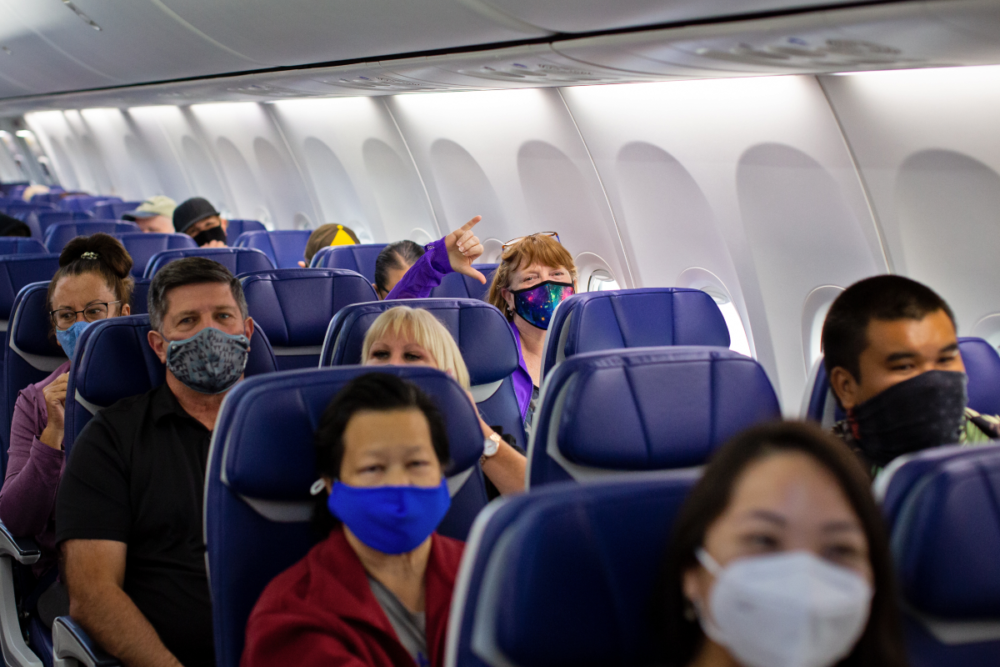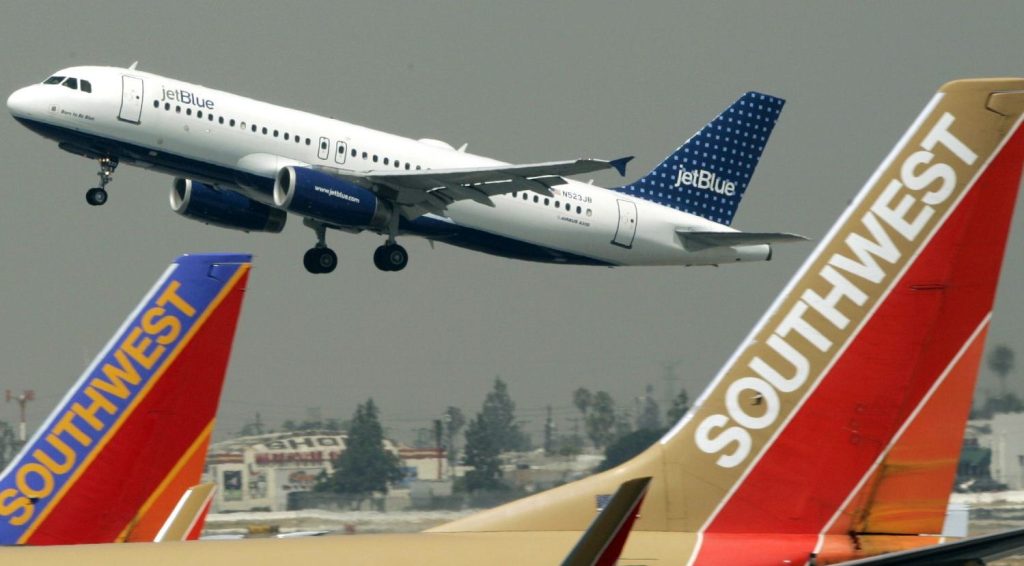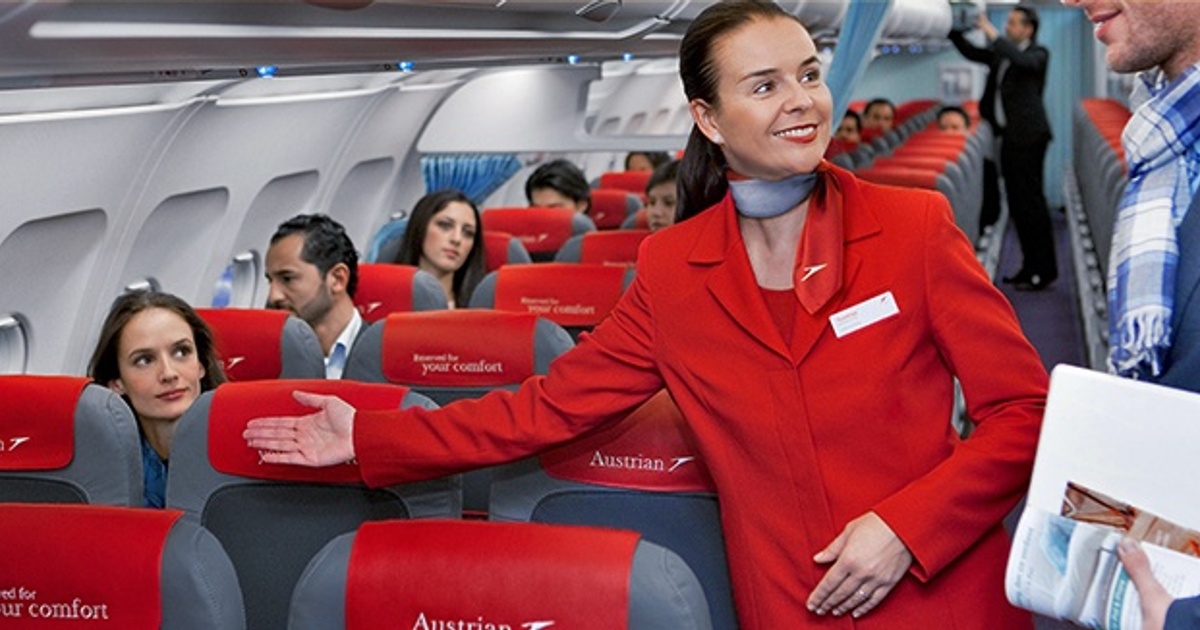A southwest flight emergency landing recently encountered a terrifying ordeal that underscores both the unpredictability of air travel and the professionalism required to manage in-flight emergencies. Southwest Flight 225, which departed from Denver International Airport bound for Phoenix, was forced to make an emergency landing shortly after takeoff due to a mechanical failure that triggered a wave of panic among passengers.
The Incident: A Sudden Crisis

The flight, carrying 137 passengers, had just taken off when a loud noise reverberated through the cabin—a noise that would later be identified as a tire blowing out during takeoff. This unexpected event set off a chain reaction of fears, concerns, and emergency protocols. As the pilots worked to assess the situation, the flight attendants quickly moved to prepare the cabin for a possible crash landing, instructing passengers on safety procedures and preparing them for the worst.
Julianna Donadio, a passenger on the flight, described the palpable fear that gripped the cabin. The loud pop from the tire failure led many to believe something far worse had happened. As the plane circled back to Denver, uncertainty loomed large, with passengers grappling with the possibility that the flight might not end safely.
Expert Handling: The Crew’s Calm Response
Amid the chaos, the calm and professional demeanor of the pilot and flight attendants became a beacon of hope for those onboard. The pilot, whose voice remained steady over the intercom, reassured passengers, creating a semblance of calm in an otherwise tense atmosphere. Donadio recalled how the pilot’s composed instructions helped to alleviate some of the fear, even as flight attendants moved swiftly to ensure everyone was braced for impact.
Flight attendants, trained rigorously for such scenarios, turned on all cabin lights, prepped exit rows, and instructed passengers to brace for a crash landing. Despite the anxiety and fear that had taken hold, the crew’s decisive actions played a crucial role in the safe outcome of the flight.
The Landing: A Collective Sigh of Relief

After what seemed like an eternity for those onboard, the plane touched down safely back at Denver International Airport. The landing, though nerve-wracking, was executed with precision. Firetrucks lined the runway, prepared for any eventuality. The collective sigh of relief that swept through the cabin was almost tangible, with passengers erupting into applause, not from habit, but from sheer gratitude and relief.
One passenger was taken out on a stretcher, but there were no serious injuries—a testament to the effective crisis management by the crew. As the plane taxied to the gate, the earlier tension gave way to a mood of celebration and appreciation. Donadio mentioned how passengers, who had moments earlier feared for their lives, began to cheer and applaud, expressing their thanks to the pilot and flight attendants who had guided them safely through the ordeal.
Broader Implications: A Reminder of Air Travel Realities
This incident is not an isolated one; it is a stark reminder of the complexities and risks associated with air travel. Mechanical failures, though rare, do occur, and when they do, the response of the flight crew can make all the difference. In this case, the failure of a single tire had the potential to escalate into a catastrophic event, but thanks to the crew’s training and composure, disaster was averted.
Southwest Airlines has a long-standing reputation for prioritizing safety, and this event serves to reinforce the importance of such a commitment. The airline, in its statement following the incident, emphasized that passenger safety is their utmost priority, a sentiment echoed by the swift and efficient handling of the emergency by both the crew and the airline’s ground staff.
Conclusion: Reflections on a Harrowing Experience
For the passengers of Flight 225, the experience was undoubtedly harrowing, but it was also a powerful reminder of the skill and dedication of those who work behind the scenes to keep air travel safe. The quick thinking and professionalism displayed by the crew not only ensured the safety of all on board but also provided a sense of comfort and reassurance during a moment of crisis.
As investigations continue into the specific mechanical failure that led to the emergency, the broader aviation community will undoubtedly be watching closely. Incidents like these, while frightening, provide valuable lessons and insights that can help improve safety protocols and prevent future occurrences.
In the end, while no passenger boards a flight expecting such an event, it is reassuring to know that when emergencies do arise, there are trained professionals ready to step up and ensure that everyone arrives safely at their destination
FAQ on Southwest Flight Emergency Landing
What happened during the Southwest flight emergency landing? A Southwest Airlines flight departing from Denver International Airport experienced a mechanical issue shortly after takeoff, which led to an emergency landing. The issue involved a tire blowout, which caused significant concern among passengers and prompted the crew to prepare for a potential crash landing. Fortunately, the plane landed safely back at Denver.
How did the crew respond to the emergency? The flight crew acted swiftly and professionally. The pilots maintained calm communication with both air traffic control and passengers, while the flight attendants prepared the cabin for an emergency landing. Their actions, including instructing passengers on safety procedures, were crucial in ensuring the flight’s safe outcome.
Were there any injuries reported? There were no serious injuries reported. However, one passenger was taken out on a stretcher as a precaution. The rest of the passengers and crew were unharmed, thanks to the effective management of the emergency.
What caused the emergency landing? The emergency landing was triggered by a tire blowout during takeoff, which potentially compromised the aircraft’s hydraulic system. This failure necessitated an immediate return to the airport for safety reasons.
How did the passengers react during the emergency? Passengers experienced a range of emotions, from fear to relief. Initially, many were terrified, especially when the cabin crew began emergency preparations. However, after the safe landing, passengers expressed their gratitude to the crew, with applause and cheers filling the cabin.
How does this incident compare to other recent Southwest Airlines emergencies? This incident is part of a broader pattern of mechanical issues that have affected Southwest and other airlines recently. It highlights the importance of ongoing safety measures and maintenance in aviation. While rare, such emergencies remind passengers of the inherent risks of air travel and the critical role of crew training and preparedness.
What measures are being taken following the incident? Southwest Airlines and relevant authorities are investigating the incident to understand the cause and prevent future occurrences. The airline reiterated its commitment to passenger safety and is reviewing the aircraft involved in the incident as part of standard protocol.
What should passengers know about air travel safety? Air travel is generally very safe, but emergencies can occur. Passengers should always pay attention to safety briefings, know where the exits are, and be prepared to follow crew instructions in an emergency. The professionalism and training of airline crews are key factors in managing such situations effectively.
How long was the delay for passengers on the affected flight? Passengers were delayed by approximately three hours, as they were transferred to another aircraft to continue their journey to Phoenix. Southwest Airlines apologized for the inconvenience and emphasized that safety is their top priority.
Where can I find more detailed information about the incident? For more detailed information, you can refer to news coverage by reputable sources like Fox Business or 9News. These reports provide in-depth details about the incident, including passenger accounts and official statements from the airline.



